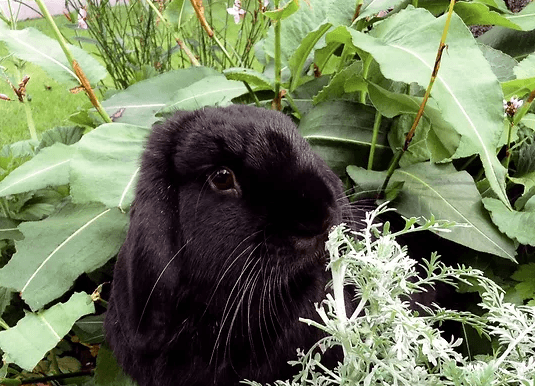General Care
Rabbits have specific and somewhat unusual needs. We can help you keep them happy.
They have always been popular as children’s pets but currently their popularity as companion animals for adults are growing, especially in urban areas where space is limited.
Their lively and curious behaviour is a source of great enjoyment for their owners, and as social animals they greatly benefit from the company of humans and other animals.
In nature rabbits are prey animals and as such do not exhibit obvious signs of fear, pain or even contentment. They behave very differently from dogs and cats and it is important that we as owners understand and acknowledge these differences.
When buying a rabbit as a child’s pet we must recognize that rabbits do not always conform to the cute and cuddly stereotype, for when they are frightened they may panic.
A frightened, poorly secured rabbit will be at great risk of a potentially fatal injury such as a spinal fracture if allowed to kick, besides inflicting painful scratches to the handler.
If your child is easy going and calm he or she may get on well with a well-handled rabbit. However a loud active child may find it difficult to build a relationship with a rabbit.
As a parent you should reconcile yourself that a rabbit is an adult’s responsibility – they are very sensitive to changes to their feeding, cleaning and exercise routines. Changes are stressful and may lead to illness.
Symptoms of disease are often subtle changes in appetite, behaviour or droppings that even older children may miss. It is unreasonable to expect a child of any age to take sole responsibility for the care of any pet.
While every rabbit is an individual certain generalizations can be made. Before buying a rabbit consider that the small, dwarf breeds tend to be lively, energetic and more skittish, while the larger breeds are usually less active and more easy going.
These larger breeds tend to be more placid and bond with people and are quite happy to sit alongside you and be stroked.
The best time to acquire a rabbit is when it has been weaned at around eight weeks of age. Give it time to become used to its new surroundings at home, then gradually increase the amount of contact with adults and children and get it accustomed to being stroked and handled regularly.
One or more?
Rabbits are not designed to be solitary. While their need for companionship can be partially met by a human we cannot provide them with the constant interaction that an animal companion can.
Pairs of rabbits can be easier to care for and boredom is seldom a problem.
Unless you are intent on breeding non-neutered rabbits of opposite sexes should not be housed together! Neutering makes for smoother introductions and better long-term relationships between same sex partners as well as male/female pairs.
Neither should you house more than one male with a single female, and guinea pig companions may be harassed and dominated by the rabbit.
Introduction needs planning and supervision as any pairing may just as possibly result in dramatic hostility or lifelong devotion.
The best way to introduce two rabbits is on neutral territory. You should never put a male or a female in another female’s territory as they will fight. Let the rabbits have sight, sound and smell of each other for a day or two before allowing them to meet physically.
Be prepared to separate the couple if fighting ensues… we are told a water pistol can be helpful!
Grooming
Rabbits are fastidious groomers but will benefit from weekly brushing in order to remove excess loose hair. Longhaired breeds may need daily grooming. Dandruff is unusual and may indicate the presence of fur mites.
Indoor rabbits will need to have their toenails trimmed – left untrimmed they will become long and unsightly. Safe handling and restraint.
The safest way to approach a rabbit is to begin by stroking the top of the head – offering your hand for it to sniff, or touching its nose or chin may be resented and the animal may attack.
Rabbits should generally be picked up with a firm grip over the loose skin around the neck, always paying attention to support for the hind limbs.
Never, never attempt to lift a rabbit by its ears.


